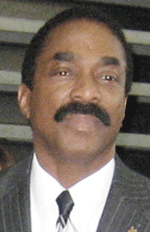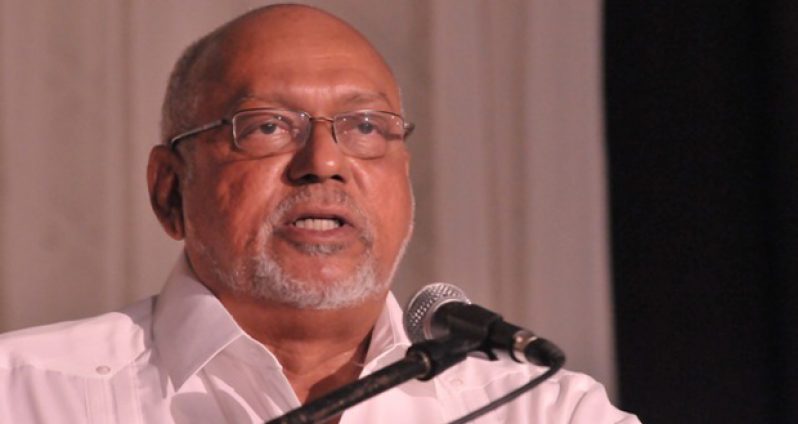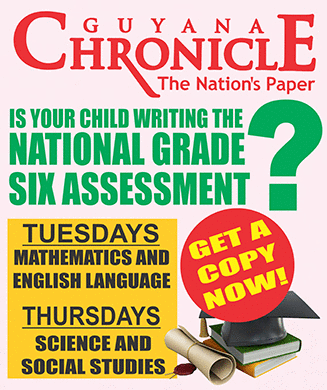Insisting the dictatorship PNC Gov’t indulged in ‘State terrorism’…
Dr Omawale rules out violence from PPP
Dr Omawale yesterday told Commissioner Seenath Jairam at the Walter Rodney Commission of Inquiry that he never considered he was ever in danger from the People’s Progressive Party (PPP), but only from the dictatorship People’s National Congress (PNC) Government’s State machinery.Basil Williams, Counsel for the PNC, yesterday sought to discredit growing testimony at the historic Commission of Inquiry that the PNC Government conspired in sinister plots to execute “State terrorism” against its political opponents,

especially the leaders of the Working People’s Alliance (WPA).
Williams, appearing at the distinguished Presidential Commission to cross examine Dr Omawale, who had given damning testimony against the PNC dictatorship, appeared calm, jovial, agreeable, pleasant, eschewing his usual aggressive stance and hostile tone.
Dr Omawale maintained his cool calmness in the Witness Box, answering Williams’ questions with ease and assurance.
When Williams asked Omawale about Jamaica banning Dr Walter Rodney and Dr Clive Thomas from its shores, Omawale calmly informed Counsel that Jamaica practiced free and fair elections, unlike the PNC dictatorship government.
Omawale told the distinguished Commission that he came to the conclusion that the death of Dr Walter Rodney on Friday, June 13, 1980 “was a terrorist act of the State” under the PNC Government.
Omawale served as the Organising Secretary of the WPA, and denied any knowledge that the WPA was accumulating arms in its civil rebellion against the PNC Government, which, Omawale testified, restricted freedom of movements of Guyanese citizens, denied the nation free and fair press, and indulged in extensive secret surveillance, harassment and threats against WPA leaders, party members and sympathisers.
Omawale denied Williams’ suggestion that the WPA was infringing on the “stronghold” of the PPP in Berbice, and rejected Williams’ conjecture that the PPP may have wanted to harm Omawale.
He also maintained that the PNC Government’s threats and intimidation affected his political work, rejecting the idea that the PPP wanted to harm him. Omawale expressed deep admiration for Dr Cheddi Jagan, then leader of the PPP, and informed the Commission that Dr Jagan cooperated with him at public meetings, to the severe displeasure of the PNC Government and its “thugs”.
The tall, distinguished 74-year-old Omawale, his hair and beard white and neatly styled, agreed with Williams that the WPA and Dr Rodney wanted a “civil rebellion” against the PNC dictatorship, as both Eusi Kwayana and Dr Rupert

Roopnarine, co-leaders of the WPA, have admitted publicly.
Williams asked Omawale if Dr Rodney’s public statement that the PNC dictatorship “must go by any means” would not have “triggered” Special Branch “to put you and your colleagues under surveillance”.

Williams said Dr Rodney was under surveillance in Britain and Jamaica, but Omawale said he was not aware of this. He also debunked Williams’ suggestion that the shooting of WPA executive member Dr Josh Ramsammy in front of a bank in Georgetown could have been “an attempted robbery”.
Williams spent considerable time dealing with the horrifying accounts the Commission has heard of the PNC Government practicing paramountcy of the party as a governing doctrine, seeking to elicit from Omawale that paramountcy was a normal “socialist” practice, even in Europe. Omawale disagreed, telling Williams that “the PNC was a dictatorship, and it attempted to become a constitutional dictatorship”.
Another sore point with Williams was the Police shooting to death of WPA activists Edward Dublin and Ohene Koama. Williams said the Commission should ask the Guyana Police Force for records of these killings, because “a cache of arms was in the vehicle” when one was killed.
The new, easy attitude of Williams saw him extend a hand of cordiality to the Commission, saying that “if only all of us had come together and constituted this Inquiry, it would have been so well”. He made this comment after Commission Chairman Sir Richard Cheltenham reminded Williams that he could introduce evidence to the court.
This newspaper will detail in tomorrow’s report a series of questions that Commissioner Jacqueline Samuels-Brown asked Omawale yesterday.
After Omawale’s testimony, Mr Nirmal Rohit Kanhai took to the witness stand, in an interesting twist to the Commission’s hearings. After a series of questions from Commission Counsel Glen Hanoman, establishing his expertise, Kanhai saw the Commission recognise him as an expert witness.
Kanhai’s expertise is in explosive devices, particularly communications device, and much of his testimony could shed light on the technical aspects of the communications device disguised as a deadly bomb that exploded in the lap of Dr Rodney on that fateful night in Georgetown of June 13, 1980, a night that forever transformed the history of Guyana and the Commonwealth Caribbean.
Commissioner Jairam and Samuels-Brown went into graphic details about the condition of Dr Rodney’s body after the bomb shattered his flesh.
The Chronicle will publish a detailed report of Kanhai’s testimony to the Commission.
Much of the day saw Counsel Hanoman grill Kanhai, and the full testimony will be detailed in this newspaper’s tomorrow edition.




.jpg)









